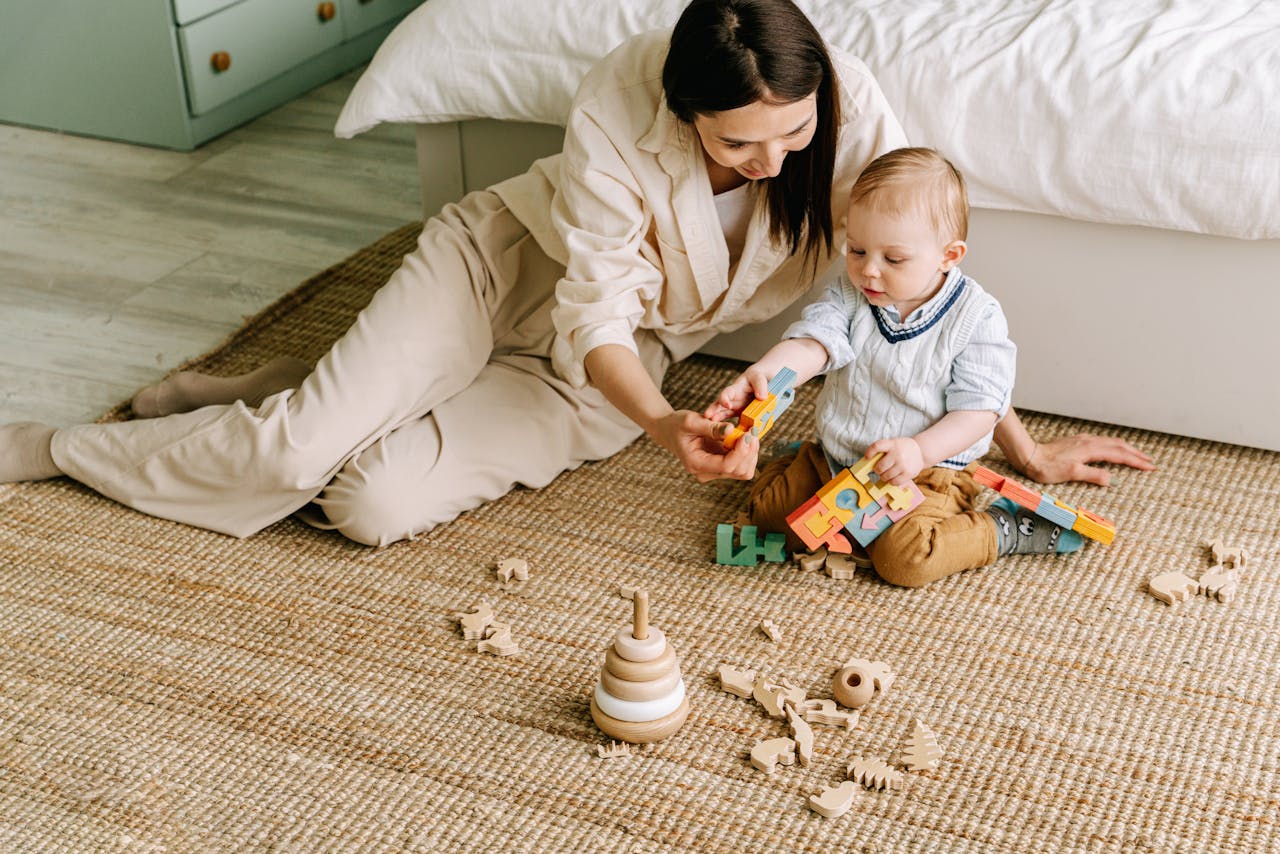🔢 Not All Number Puzzles Are Created Equal
Number puzzles are often marketed as “educational,” but not all of them truly teach counting or support early numeracy.
For toddlers, learning to count isn’t about memorising the number song — it’s about understanding what numbers represent.
A good number puzzle for toddlers should help them build a bridge between symbols (1, 2, 3) and real quantities.
🧠 What Does “Learning to Count” Really Mean?
Counting involves more than saying numbers out loud. It includes:
- One-to-one correspondence (pointing to one object per number)
- Quantity recognition (knowing what “3” looks like)
- Order and sequence (understanding that 3 comes after 2)
- Symbol matching (linking the number ‘5’ to a group of 5 items)
The right puzzle introduces these ideas gently, through repetition, manipulation, and play — the natural learning methods of toddlers.
✅ What to Look for in a Quality Number Puzzle
Here are the features that matter most when choosing a puzzle that will actually teach counting:
➤ Clear, Distinct Number Shapes
Choose a puzzle with clean, recognisable numerals (0–9 or 1–10). Avoid overly stylised fonts or decorative shapes that confuse toddlers.
➤ One Number Per Slot
A well-designed puzzle will have each number as an individual piece with a matching space. This encourages both visual recognition and motor skill development.
➤ Visual Quantity Reinforcement
Look for puzzles that pair numbers with matching dot patterns, objects, or groupings (e.g., the number 3 next to three dots or stars). This helps toddlers make the link between symbol and quantity.
➤ Tactile, Graspable Pieces
Pieces should be large enough for small hands and provide satisfying tactile feedback when placed correctly — key for kinaesthetic learning.
➤ Muted Colours for Focus
Soft pastels or Montessori-inspired tones help reduce visual clutter and encourage sustained attention.
🧩 How Our Puzzle Supports Counting
At Frankie & Leo, our number puzzle is designed for developmental impact, not just decoration.
It includes:
- Numbers 1–10 with bold, easy-to-read forms
- Accompanying quantity dots to reinforce counting
- A self-correcting design that helps toddlers learn through trial and error
- A minimalist aesthetic that fits beautifully into calm, child-led play spaces
It’s not just a toy — it’s a learning tool disguised as play.
🧠 Learning Through Repetition and Touch
Why puzzles? Because toddlers learn best by doing.
Each time your child:
- Picks up the number 4
- Counts out the dots
- Fits the piece in place
…they’re strengthening the connection between symbol and meaning — and laying the foundation for maths skills like addition, subtraction, and sequencing.
Let them repeat it. That’s how mastery is built.
🏠 How to Support Counting at Home
Pair your number puzzle with simple, everyday activities:
- Count snack items (“You have 3 blueberries”)
- Group toys (“Let’s find 5 blocks together”)
- Trace numbers with fingers before placing them
- Clap, tap, or step while counting out loud
- Narrate what your child is doing: “You just placed number 6 — let’s count the dots.”
The goal isn’t fast memorisation — it’s meaningful interaction.
🧒 When Should You Introduce Number Puzzles?
Most toddlers are ready to explore number puzzles around 2 to 2.5 years, especially if they:
- Show interest in numbers or counting rhymes
- Begin identifying shapes or letters
- Enjoy matching games or pointing to items in groups
Start slow. Introduce 3–4 numbers at a time and gradually build up to the full set.
💡 Final Thought
A number puzzle isn’t just a plaything — it’s a powerful tool to help toddlers make sense of symbols, quantities, and order.
By choosing a puzzle that connects touch with meaning, you’ll support early math skills in a way that’s both joyful and developmentally appropriate.
👉 Discover Our Number Puzzle for Toddlers
📸 See It in Action
Want to see how real families are using our number puzzle at home?
Check out @frankiexleo on Instagram for play inspiration, real-world setups, and learning tips.
📚 Reference:
Gelman, R. & Gallistel, C. R. (1978). The Child’s Understanding of Number. Harvard University Press.


